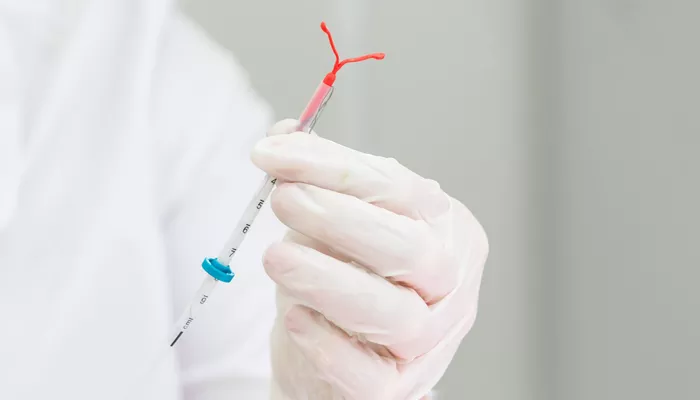The Centers for Disease Control and Prevention (CDC) recently released new guidelines aimed at managing pain during intrauterine device (IUD) insertions, a move welcomed by many in the medical community. However, while these updated recommendations mark a significant step forward, healthcare professionals caution that they do not fully address the multifaceted nature of pain associated with the procedure.
The Growing Popularity of IUDs and the Pain Problem
IUDs, small T-shaped devices inserted into the uterus, have become increasingly popular in the United States as a reliable form of long-term birth control. With a success rate of over 99% in preventing pregnancy, they are favored for their efficacy and convenience. However, the insertion process is often painful, and this discomfort has become a topic of widespread discussion, particularly on social media platforms like TikTok. Users share their personal experiences, with many describing intense cramps, bleeding, and even episodes of fainting.
The CDC’s new guidelines, published earlier this month, include a key recommendation: patients should receive counseling on pain management options before the procedure. This shift reflects a growing awareness within the healthcare community that women’s pain, particularly during gynecological procedures, has historically been under-addressed.
Dr. Deborah Bartz, an OB-GYN at Brigham and Women’s Hospital in Boston, acknowledges the progress made with these guidelines but emphasizes that they are only a starting point. “A lot of us have recognized that historically, women’s pain has not been adequately addressed,” Bartz said. “We’re trying to be much more cognizant of the pain that patients feel during procedures.”
Expanding Pain Management Options: What’s New?
The 2023 update marks the first significant change to the CDC’s recommendations since 2016, when the agency initially suggested the use of lidocaine injections to numb the cervix as a pain management option. The latest guidelines expand these options to include topical lidocaine, available in gels or sprays. These products are designed to provide a less invasive alternative to injections, potentially offering more comfort to patients.
However, experts note that these measures only target a portion of the pain experienced during an IUD insertion. The procedure begins with a pelvic exam, followed by the insertion of a speculum to access the cervix. The cervix is then held in place using a tenaculum—a device resembling a pair of forceps—while the depth of the uterus is measured, and the IUD is inserted. Though the process typically takes less than three minutes, it can cause varying levels of pain depending on the individual.
The Tenaculum: A Key Source of Discomfort
One of the most scrutinized aspects of the IUD insertion process is the use of the tenaculum, a tool with two hooked ends that grip the cervix to hold it steady. While effective in securing the cervix, the tenaculum is often cited as a major source of pain due to the pressure it exerts on the nerve-dense cervical tissue.
Dr. Bartz notes that although the tenaculum can cause discomfort, it is not necessarily the most painful part of the procedure for all patients. The intense cramping that occurs during the measurement of the uterus and the insertion of the IUD itself is often what patients find most distressing.
Innovative Solutions: The Carevix Device
In response to the challenges posed by the tenaculum, the medical device industry has been exploring alternatives that could potentially reduce pain. One promising development is the Carevix, a new device created by the Swiss company Aspivix. Unlike the traditional tenaculum, the Carevix uses suction to grasp the cervix, a method that may result in less pain and reduced bleeding.
The Carevix received clearance from the U.S. Food and Drug Administration (FDA) in early 2023. Early results from a study conducted in Switzerland suggest that the device could offer a more comfortable experience for patients undergoing IUD insertion. To further assess its effectiveness, a clinical trial is currently underway in the United States, led by researchers at Indiana University.
Ikram Guerd, the U.S. managing director for Aspivix, revealed that the company is preparing for a commercial rollout of the Carevix by the end of 2024. “We’re already partnered with about a dozen clinics, mostly private and university hospitals, to soft-launch the product,” Guerd said. The company has also established a warehouse and manufacturing plan in anticipation of broader distribution.
Looking Ahead: The Future of Pain Management in IUD Insertions
While the CDC’s updated guidelines represent a meaningful step forward, the journey toward fully addressing pain during IUD insertions is far from complete. As the medical community continues to innovate and explore new technologies like the Carevix, there is hope that future advancements will provide more comprehensive pain relief for patients.
In the meantime, healthcare providers are encouraged to prioritize open communication with their patients about pain management options. Counseling before the procedure, as recommended by the CDC, is essential to ensuring that patients are fully informed and prepared for what to expect.
Ultimately, the goal is to make IUDs more accessible and comfortable for all who choose them. As more attention is paid to the complexities of pain during IUD insertions, it is likely that the landscape of gynecological care will continue to evolve, leading to better outcomes and experiences for patients.
The conversation around IUD insertion pain is a reminder of the broader need to address women’s pain in healthcare more effectively. The new CDC guidelines are an important step, but they are just the beginning of what must be an ongoing effort to improve patient care in this crucial area of reproductive health.
Related articles:
Finding the Best Birth Control for PCOS Management
All You Need to Know About Gynecological Health
Choosing the Best Care: Navigating the World of OB-GYN Services


